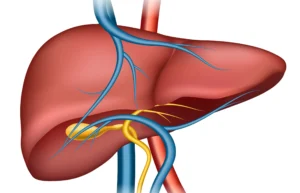 Hepatitis, an inflammatory condition affecting the liver, encompasses a range of viral infections, each with its distinct causes, transmission routes, and clinical manifestations. From hepatitis A, primarily spread through contaminated food and water, to hepatitis B and C, transmitted through blood and bodily fluids, understanding the various forms of hepatitis is essential for prevention, early detection, and treatment.
Hepatitis, an inflammatory condition affecting the liver, encompasses a range of viral infections, each with its distinct causes, transmission routes, and clinical manifestations. From hepatitis A, primarily spread through contaminated food and water, to hepatitis B and C, transmitted through blood and bodily fluids, understanding the various forms of hepatitis is essential for prevention, early detection, and treatment.
Today we’ll provide a comprehensive overview of hepatitis, exploring its causes, signs, prevention strategies, and available treatment options.
Understanding Hepatitis: Types and Causes
Hepatitis is classified into several types, including hepatitis A, B, C, D, and E, each caused by different viruses. Hepatitis A and E typically spread through contaminated food and water, while hepatitis B, C, and D primarily transmit through blood-to-blood contact, unprotected sexual intercourse, or from mother to child during childbirth.
Other less common causes of hepatitis include alcohol consumption, autoimmune diseases, and certain medications or toxins.
Signs and Symptoms of Hepatitis
The signs and symptoms of hepatitis vary depending on the type and severity of the infection. Common symptoms may include:
- fatigue,
- jaundice (yellowing of the skin and eyes),
- abdominal pain,
- nausea,
- vomiting,
- dark urine, and
- clay-colored stools.
Some individuals with hepatitis may experience no symptoms initially. While others may develop chronic liver disease or complications such as liver cirrhosis or liver cancer over time.
Prevention of Hepatitis
Prevention strategies for hepatitis focus on reducing the risk of infection through vaccination, practicing safe hygiene and sanitation measures, and avoiding behaviors that may increase the risk of exposure to the virus.
Vaccination is available for hepatitis A and B and is recommended for individuals at increased risk of infection, including healthcare workers, travelers to endemic areas, and individuals with certain medical conditions.
Other preventive measures include practicing safe sex, avoiding sharing needles or personal hygiene items, and ensuring food and water safety when traveling to regions with high hepatitis prevalence.
Treatment Options for Hepatitis
Treatment for hepatitis depends on the type of virus and the severity of the infection. Hepatitis A and E infections typically resolve on their own with supportive care, such as rest and hydration. Chronic hepatitis B and C infections may require antiviral medications to suppress viral replication and prevent liver damage. In some cases, individuals with advanced liver disease may require liver transplantation as a life-saving intervention.
Hepatitis poses a significant global health burden, affecting millions of individuals worldwide and contributing to liver-related morbidity and mortality. By understanding the causes, signs, prevention strategies, and treatment options for hepatitis, individuals can take proactive steps to protect themselves and others from infection and mitigate the impact of the disease.
Early detection through screening and access to appropriate medical care is essential for managing hepatitis effectively and preventing complications. It is crucial to raise awareness about hepatitis and promote vaccination, safe hygiene practices, and harm reduction strategies to reduce the incidence and impact of this potentially life-threatening condition.
Picture Credit: Freepik
